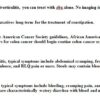Description
NR 511 Midterm Exam Study Guide
NR 511 Week 1
- Define diagnostic reasoning
- Discuss and identify subjective & objective data
- Discuss and identify the components of the HPI
- Describe the differences between medical billing and medical coding
- Compare and contrast the 2 coding classification systems that are currently used in the US healthcare system
- Discuss how specificity, sensitivity & predictive value contribute to the usefulness of the diagnostic data
- Discuss the elements that need to be considered when developing a plan
- Describe the components of Medical Decision Making in E&M coding
- Correctly order the E&M office visit codes based on complexity from least to most complex
- Discuss a minimum of three purposes of the written history and physical in relation to the importance of documentation
- Accurately document why every procedure code must have a corresponding diagnosis code
- Correctly identify a patient as new or established given the historical information
- Identify the 3 components required in determining an outpatient, office visit E&M code
- Describe the components of Medical Decision Making in E&M coding
- Correctly order the E&M office visit codes based on complexity from least to most complex
- Explain what a “well rounded” clinical experience means
- State the maximum number of hours that time can be spent “rounding” in a facility
- State 9 things that must be documented when inputting data into clinical encounter
- Identify and explain each part of the acronym SNAPPS
NR 511 Week 2
- Identify the most common type of pathogen responsible for acute gastroenteritis
- Recognize that assessing for prior antibiotic use is a critical part of the history in patients presenting with diarrhea
- Describe the difference between Irritable Bowel Disease (IBS) and Inflammatory
- Discuss two common Inflammatory Bowel Diseases
- Discuss the diagnosis of diverticulitis, risk factors, and treatments
- Identify the significance of Barrett’s esophagus
- Discuss the diagnosis of GERD, risk factors, and treatments
- Discuss the differential diagnosis of acute abdominal pain, work-up and testing, treatments
- Discuss the difference between sensorineural and conductive hearing loss
- Identify the triad of symptoms associated with Meniere’s disease
- Identify the symptoms associated with peritonsillar abscess
- Identify the most common cause of viral pharyngitis
- Identify the most common cause of acute nausea & vomiting
- Discuss the importance of obtaining an abdominal xray to rule out perforation or obstruction even though the diagnosis of diverticulitis can be made clinically
- Discuss colon cancer screening recommendations relative to certain populations
- Identify at least two disorders that are considered to be disorders related to conductive hearing loss
- Identify common characteristics in a rash caused be Group A Strep
- Discuss that the diagnosis of streptococcal pharyngitis can be made clinically based on the Centor criteria:
- Describe an intervention for a patient with gastroenteritis
- Discuss an appropriate treatment for prophylaxis or treatment of traveler’s diarrhea
- Identify at least one effective treatment for Irritable Bowel Syndrome (IBS)
- Identify at least one prescription medication for the treatment of chronic constipation
- Discuss at least one treatment for Meniere’s disease
NR 511 Week 3
- Discuss that the majority of dyspnea complaints are due to cardiac or pulmonary decompensation-
- Explain the differences between intra-thorax and extra-thorax flow disorders
- Identify at least three examples of flow and volume disorders (intra and/or extra thorax)
- Discuss diagnosis, risk factors and treatments for asthma
- Describe appropriate tests in the work up for dyspnea-
- Discuss clinical findings and PFTs for asthma, chronic bronchitis, emphysema, and COPD
- Differentiate between the following common rashes:
- Differentiate between the following tineas: pedis, cruris, corporis and unguium and describe an appropriate treatment
- Identify the virus that causes warts
- Differentiate between atopic and contact dermatitis and give examples of each
- Identify common characteristics associated with blepharitis, chalazion and hordeolum
- Differentiate between viral, allergic, bacterial, toxic and HSV conjunctivitis (CH.8 & lecture)
- Discuss which chemical injury is associated with the most damage and highest risk to vision loss –
- Recognize common eye emergency conditions that require emergency room evaluation
- Discuss glaucoma, diagnosis and treatment
- Discuss diabetic retinopathy






